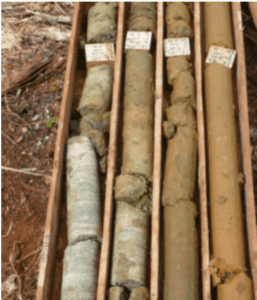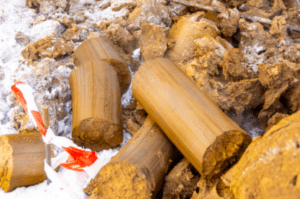Work Site Soil Testing and Borings
Soil testing consists of drilling into the ground and collecting soil samples called borings.
The objective is to understand the soil makeup, which can indicate potential issues or
the uniqueness of the soil conditions beneath your structure.

Soil testing, also known as soil investigation or geotechnical investigation, is used to
help determine soil properties. A soil sample is taken by drilling into the soil to collect a
boring sample and having a professional test the sample to estimate its properties. A
boring sample is also taken after soil stabilization to test the swell in the soil and make
sure it meets geotechnical requirements. This helps determine the soil conditions and if
it is adequate for construction, as well as help determine if remediation is necessary
prior to building. Understanding the soil is an important part of the building and site
preparation process.
What Is A Proper Soil & Ground Investigation?
By undertaking a proper soil investigation, you can also determine if there are any
possible problems with the soil that may affect the construction process. Allowing you to
make adjustments accordingly.

Soil reports are a necessity in nearly all construction projects that will require soil
stabilization. Therefore, it is important to understand how to obtain one. So, if you’re
looking to build a new house or starting a commercial project, contact us for more
information on how we can supply you with soil testing or soil boring samples.
Unlike some competitors, Earthlok uses an independent testing lab to evaluate soil
injection results. This ensures customers receive accurate and unbiased results under
strict laboratory soil testing standards. The post testing required after Earthlok stabilizes
your project is called an ASTM test.
The Shrink Swell Test (ASTM):
Measures the volume change that occurs because of
changes in the moisture content of clay-rich soils. Swelling pressures can cause heave,
or lifting of structures, whilst shrinkage can cause settlement or subsidence, which may
be differential.
Plasticity Index:
Measures the plasticity index (PI) is a measure of the plasticity of a soil.
The plasticity index is the size of the range of water contents where the soil exhibits
plastic properties. The PI is the difference between the liquid limit and the plastic limit.
The PVR can be defined as: A procedure is presented which provides a means for the
determination of the potential vertical rise PVR in soil strata.
How To Start The Process Of Testing My Land & Soil?
Take a proactive step to a longer lasting and more stable structure, saving you from
expensive foundation or structural repairs.
Earthlok Soil Stabilizer can provide solutions that make a difference for residential,
commercial and even roadways!
Contact us: 972-923-9698


